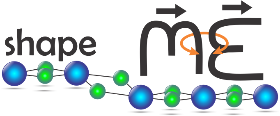The importance and impact of magnetoelectronics in our modern society can hardly be overstated. We live in a digital age, witnessing ever increasing demand for advanced single user electronics, the Internet of Things becoming reality, social networks daily producing exabytes of data. To sustain these trends, the future hungers for novel all-in-one materials that host multiple functionalities, yet foster reduced energy consumption and minimal environmental impact.
The main hypothesis in our project is that interface engineering in atomically-thin heterostructures of 2D materials can foster optimized mechanical (strain/elastic), electronic (charge/transport), and/or magnetic (exchange) coupling between the monolayer constituents, thereby yielding strong elasto-magneto-electric coupling of the overall system, broadly and actively tunable by external piezo, electronic and magnetic excitations. This consortium engages to provide theoretical in silico descriptions of the underlying physics in four Belgian universities, to be experimentally validated in the ‘Home of Graphene’ in Manchester, for concepts in function of spintronic technology forefronted in imec.
The results of this project will advance miniaturization yet optimize performance and power consumption of a multitude of practical devices, ranging from flexible, stretchable, imperceptible, bio-integrated electronics, over wearable sensors for Internet of Things, to low-power ICT components for accelerated performance of computer electronics and data storage. Next to that, our research efforts towards proper description of the material interfaces that combine different degrees of freedom (structural, electronic, magnetic, but also optical, topological) will open entirely new directions in fundamental research and contribute to further evolution of quantum tech.
